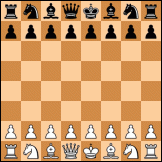I read a thread about Nakamura trolling an opponent who did not want to resign in a totally lost position and I came up with a slightly different troll concept: how much can a checkmate in one be delayed? Pretty much in the spirit of this Simpsons' clip ('We totally wasted his time... and ours!').
The requirements shall be:
- A legal position (i.e. not white pawns on a2, a3 and b2; or 10+ queens-a-side).
- There must be always an available checkmate in one move for the winning side (i.e. wKh6, wQe7, bKh8 and white moves Qd7 shall be discarded).
I composed the following (hopefully legal) position after some tunings:
[d]7k/K6q/7Q/6NB/p1p1p1p1/PpPpPpPp/1P1P1P1P/8 w - - 0 1
The plan is to move the king with caution to avoid draws by stalemate, threefold repetition and fifty-move repetition. Black can only move Kg8 and Kh8. Something like this:
Code: Select all
1. Nxh7 // From here, there will be Nf6# at least
51. Kxa4
101. Kxc4
151. Kxe4
201. Kxg4
251. Kxb3
301. Kxd3
351. Kxf3
401. Kxh3
451. g4
501. g5
551. g6
552. Bg4 // Once g6 is covered by f7, to allow a later h5
601. h3
651. h4
701. h5
751. f3
801. f4
851. f5
901. f6
951. e4
1001. e5
1051. e6
1101. e7
1151. e8=N // Also e8=B
1201. d3
1251. d4
1301. d5
1351. d6
1401. d7
1451. d8=R // Any promotion
1501. c4
1551. c5
1601. c6
1651. c7
1701. c8=N // Any promotion
1751. b3
1801. b4
1851. b5
1901. b6
1951. b7
2001. b8=B // Any promotion
2051. a4
2101. a5
2151. a6
2201. a7
2251. a8=Q
2301. CHECKMATE!How much can you push the limits?
Regards from Spain.
Ajedrecista.
